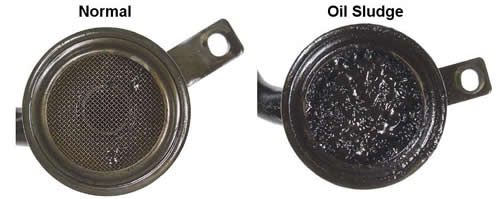OIL FILTERS
Oil filters play a key role in providing protection by helping to keep dirt, metal filings and sludge out of your oil, and out of your expensive engine. That’s why experts recommend changing your oil and oil filter in your vehicle every 3 months or 3,000 miles (5,000 kilometers), whichever comes first, to maximize engine protection. This is especially important in a state like Maryland where we have a full range of seasons and temperatures.
EXTENDED OIL CHANGE INTERVALS
In recent years, many vehicle manufacturers have extended their recommended oil change intervals to reduce maintenance costs for the vehicle owner — and have run into trouble. The Center for Auto Safety (www.autosafety.org) has logged over a thousand complaints about oil sludge problems from motorists who thought they were following the service intervals recommended in their owners manuals but ended up with a crankcase full of sludge.
Extended oil change intervals of 7,500 or 10,000+ miles are based on ideal operating conditions, not the type of short trip, stop and go driving typical for many motorists. Consequently, most drivers should follow a “severe” service maintenance schedule rather than a “normal” service schedule and considering using a fully synthetic oil to protect their engines.
SYNTHETICS
Synthetic oils are refined to a much higher degree than ordinary oils. Synthetic oils are premium oils that generally have greater viscosity stability, lower pour points and can withstand higher operating temperatures. Synthetic oils improve cold starting, reduce friction, reduce oil consumption and improve fuel economy and performance — but they typically cost twice as much per quart than regular motor oil.
Some suppliers of synthetic motor oils say the higher cost of the premium quality oil can be offset by extending oil change intervals. But this would depend on the operating conditions, age and condition of the engine. Synthetic oils are a good upgrade for most engines, but are not recommended for breaking-in newly rebuilt engines.
Below is an example of an engine’s “oil pick up tube” both clean and, completely sludged and clogged. An oil pick up tube can be thought of as your engine’s drinking straw. If it’s clogged, your engine will be thirsty for oil and if you drive a car that’s thirsty for oil, you will most certainly cause severe engine damage and 99% of the time, need to replace the engine.

If you’re not sure when your last oil change was, schedule an appointment at Padonia Auto Service to get it taken care of.



 We employ ASE Certified technicians, the industry standard for automotive repair certifications. Only the most committed technicians will test and become certified.
We employ ASE Certified technicians, the industry standard for automotive repair certifications. Only the most committed technicians will test and become certified.

